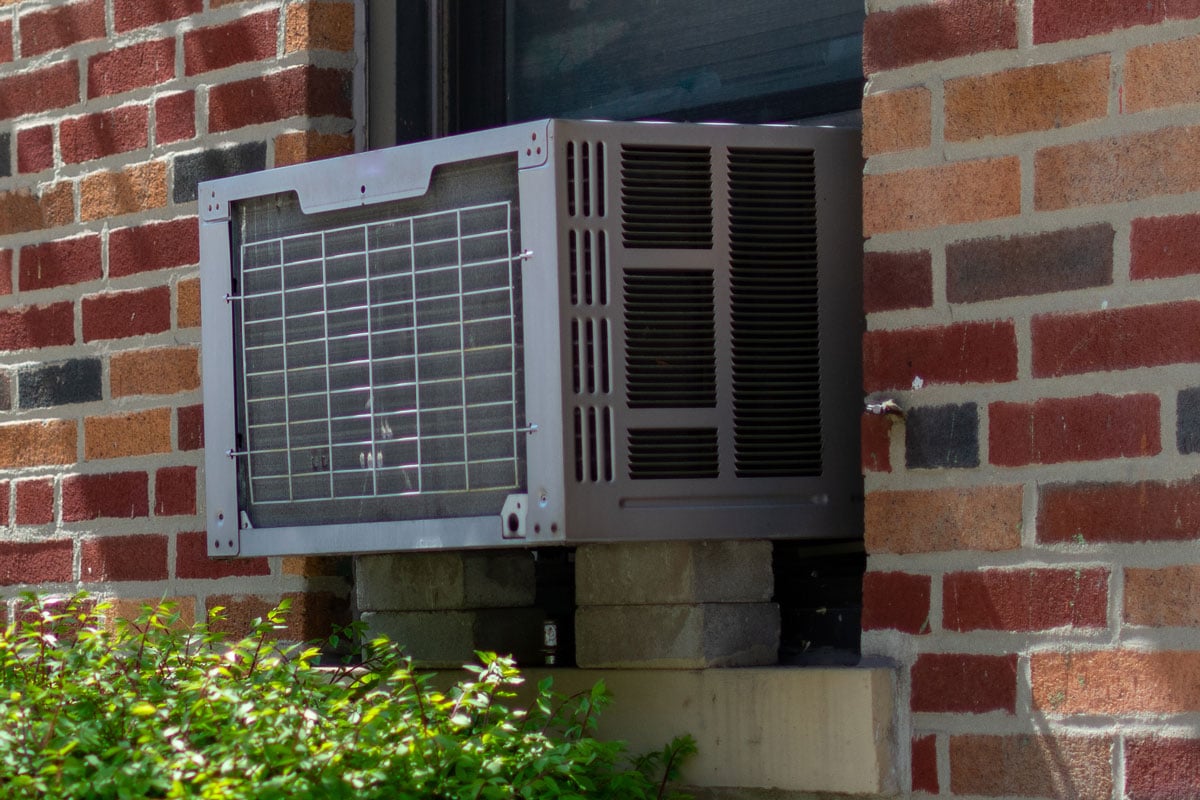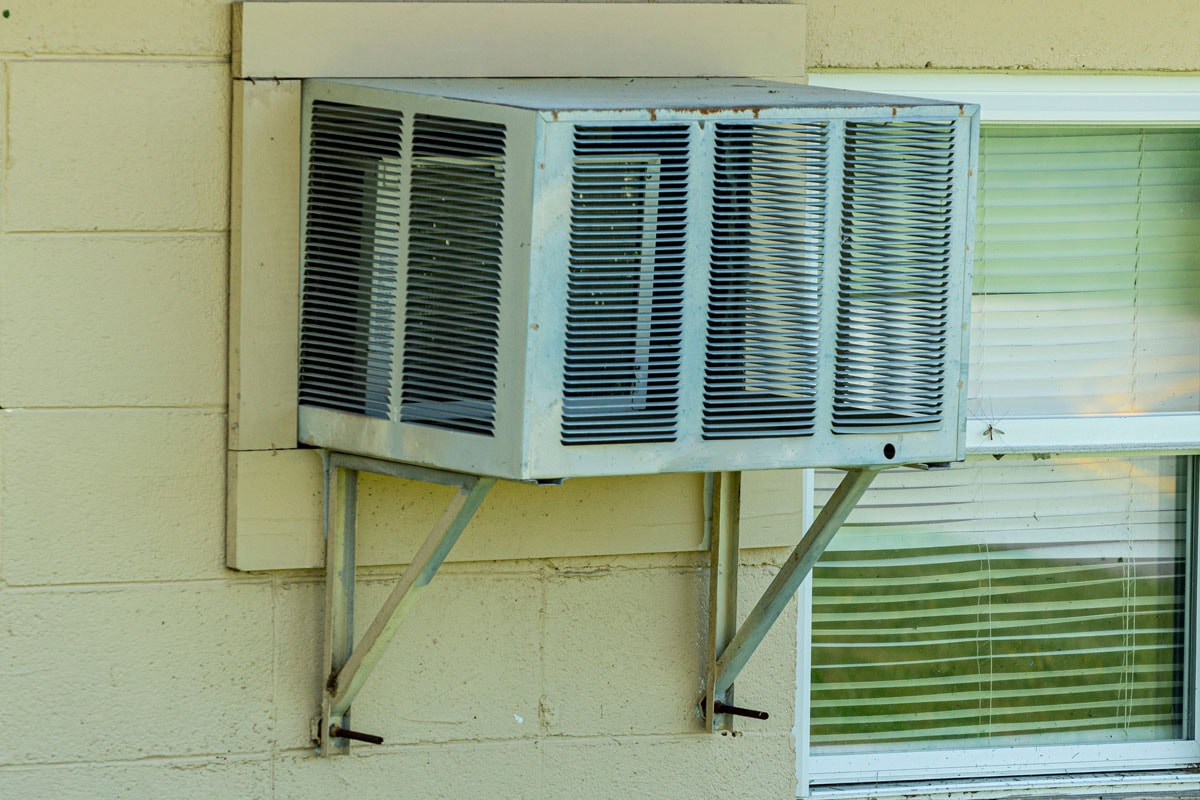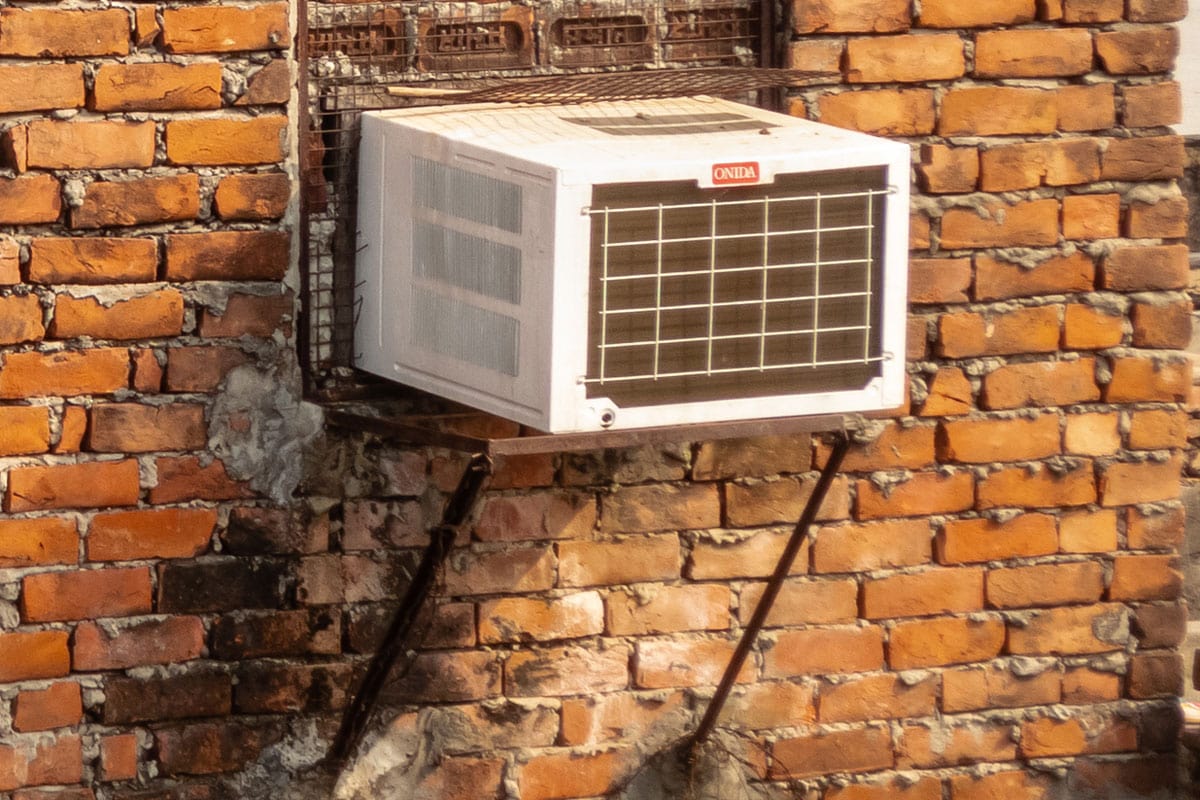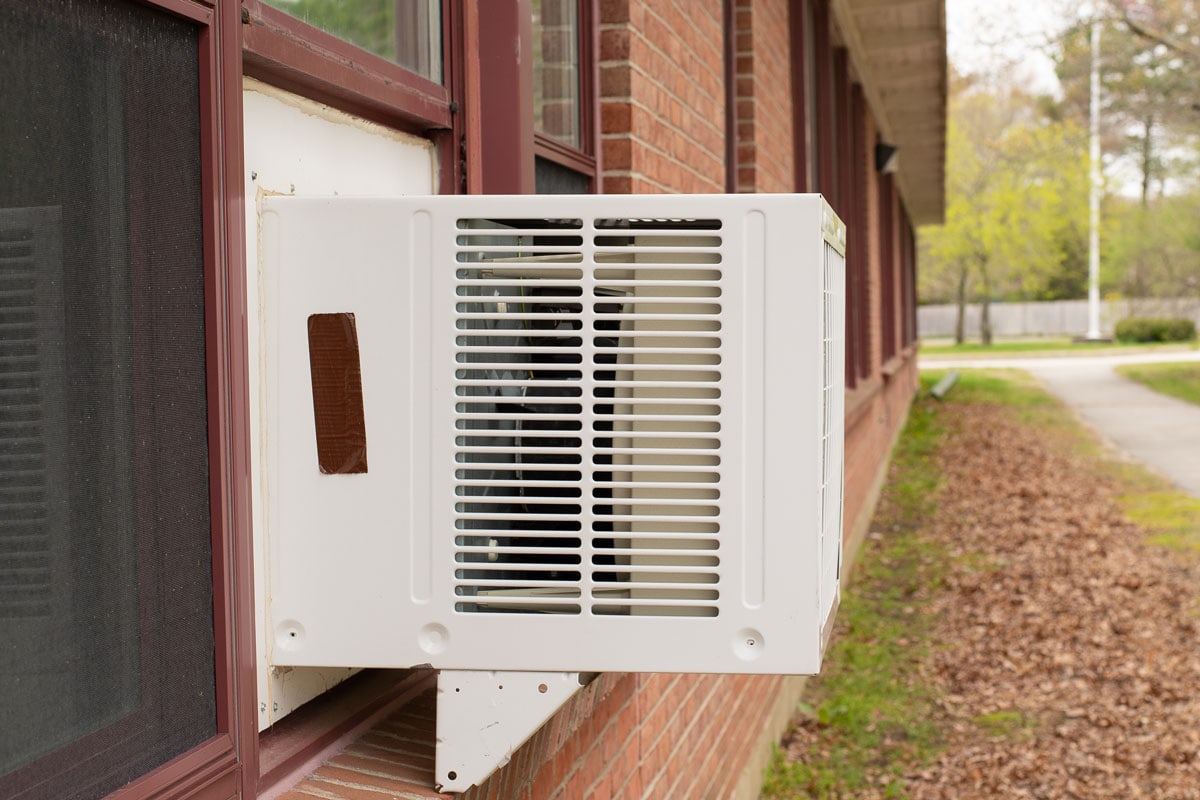Are you wondering if you can install a window air conditioner through a wall? Wonder no more, for we have researched this question, and we have the answer for you.
Yes, you can install a window air conditioner through a wall so long as the wall does not cover the unit's side vents.
The succeeding sections will give you the detailed steps on how to install a window air conditioner through a wall. Keep in mind that the installation procedure assumes that the side vents on your window air conditioner have enough space from the front to be installed through a wall. Read on!
![Window air conditioner unit in window in brick building, Can You Install A Window Air Conditioner Through A Wall [And How To]?](https://hvacseer.com/wp-content/uploads/2022/04/Can-You-Install-A-Window-Air-Conditioner-Through-A-Wall-And-How-To.png)
How to install a window air conditioner through a wall?
One important warning that experts have for window air conditioners and a wall installation is that you need to be cautious of the side vents. A window air conditioner is made to vent on its side and back, unlike a wall air conditioner that vents only through its back.
Thus, an important consideration when installing a window air conditioner through the wall is how the frame will be made. This is something that we made sure to consider in the steps below for installing a window air conditioner through the wall.

Cutting a hole in the inside wall
- Mark the area on the wall where you want to install the air conditioner.
- Locate two studs on the wall in the installation area and position the target area between the two studs.
- Measure the size of the air conditioner.
- Build a box (with no top or bottom) that is 4 to 6 inches wider and taller than the measurements of the air conditioner. This serves two purposes: allowance for a bigger replacement unit and a space to simulate the thickness of the window. Use 1x6 pre-primed wood for the box.
- Mark the wall using the outside perimeter of the box with a light pencil and a level.
- Use an oscillating saw to cut the drywall following your pencil mark. Remove the drywall and set it aside.
The DeWalt 20V Max XR oscillating multi-tool with variable speed is available on Amazon. Check it out through this link.
Trimming the insulation
- Wear protection for your eyes, mouth, and hands before proceeding. This is important to protect yourself from the insulation material behind the drywall.
- Cut the insulation along the same line as the drywall with a utility knife.
- Remove the insulation that you cut off.
The Internet's Best Premium Utility Knife set is available on Amazon. Check it out through this link.
Cutting a hole in the outer wall
- Use a long drill bit to drill marker holes along the corners of the rectangular hole going to the outer wall. This will mark the corners of the hole for the outside wall.
- Remove the siding from the outer wall.
- Use the same box and position it along the small holes that you drilled. Trace the box after making sure that it is level.
- Use your oscillating saw to cut away the outer wall.
Installing a stud brace
- Cut four 4-inch-long piece of wood that is as thick and wide as your wall stud.
- Cut two pieces of the same wood that is as long as the distance between the two studs.
- Insert the 4-inch wood into the hole and fasten it on the stud with screws. Leave a space from the edge of the hole that is equal to the thickness of the wood.
- Do the same thing on the opposite stud.
- Screw the long wood on these two supports.
- Install two more supports on the studs on the top edge of the hole following the same process.
- Place the second longer wood into the hole and rest it on top of the two supports that you installed. Screw it on the two pieces of wood.
Installing the box on the hole
- Install the box that you made earlier and screw it on the supports that you installed inside the wall. Use a level to make sure that the box is level.
- Use shims if you need to adjust the level of the box as you install it on the hole. The box should seal the open areas where the insulation is sticking out. The box will serve as the jamb of the hole.
Framing the air conditioner

- Cut a piece of plywood that matches the hole on the wall.
- Cut a hole in the plywood that is big enough for the air conditioner to slide through.
- Mark the position of the interior stops for the frame. Measure the length and the width of the hole.
- Cut four pieces of three-quarters of an inch of wood that match the length and four more that match the width.
- Screw the first set on the box. Screws will make it easy to remove and replace the plywood frame if you need to replace the air conditioner.
- Position the plywood on the box frame.
- Screw the second set of steps to secure the plywood in place.
Sealing the frame and installation
- Insert the air conditioner to test the fit of the frame before finalizing the build. The side vents of the air conditioner will not be blocked because it will have only the thickness of the plywood to support it instead of the thickness of the wall. Uninstall the air conditioner.
- Use caulk to seal all the joints on the frame.
- Use weatherstripping to seal the air conditioner and the frame.
- Cut an exterior casing that matches the casing on your windows. Nail the exterior casing around the jamb.
- Paint the frame with a color that matches your windows after the caulk cures.
- Fasten the air conditioner on the frame.
Why install a window air conditioner through the wall?

Now that we know the steps to install an air conditioner through the wall, let’s talk about some of the reasons why some people decide to install their air conditioner on the wall instead of the window.
Installing a window air conditioner through the wall has specific advantages. These advantages make it worthwhile to consider a through-the-wall installation for your air conditioner.
More efficient
Installing an air conditioner on a window makes it difficult or even impossible to seal or insulate properly because the installation is not permanent. A wall installation, on the other hand, is permanent, so you can achieve a well-sealed or insulated unit. This makes air conditioners installed through the wall more efficient.
Lower maintenance
Since air leaks are better sealed on a through-the-wall installation, your air conditioner doesn’t have to work as hard as a window installation. This means a longer-lasting AC unit with less frequent maintenance. You'll also have lower utility bills as the well-maintained unit will perform more efficiently.
Saves space
Through-the-wall installations can save space because if you install the air conditioner at a higher spot on the wall, then you can use the area beneath for furniture or decor. Unlike on a window installation, the area around the window where the air conditioner is installed should be clear so that you don’t block the airflow from the air conditioner.
Less noise
Another advantage is less noise. Window installations generate more noise because there is no proper seal around the AC unit. Additionally, the pane glass is a good sound conductor.
Safety consideration
Window installations can be a safety issue, especially if the air conditioner is installed on the only window in the room. In case of a fire, the air conditioner on the window will block the only remaining exit point if the door is inaccessible.
Disadvantages of installing an air conditioner through the wall

Let’s look at the disadvantages of installing an air conditioner through the wall.
Less flexible
If you prefer to remove your air conditioner when you do not need it, then a wall installation is not for you. A through-the-wall installation is a permanent installation. Although you can uninstall the air conditioner from the wall, you’d be left with a gaping hole the size of your air conditioner if you did.
Additionally, removing your air conditioner from its wall installation will also remove any sealant or insulation you might have applied between the air conditioner and the frame.
However, if you have an air conditioner installed through the wall, there is very little reason why you would want to remove it with the change in the seasons.
Unsuitable for rentals
A wall installation is not possible if you’re renting a house or a room. You need to cut a hole in the wall, and that is something most landlords will not likely agree to.
Higher installation cost
A wall installation requires cutting a hole and building a frame customized for your air conditioner. You will likely need to hire a carpenter to cut the hole and build the frame for you if you do not plan to do it yourself.
Conclusion

Installing a window air conditioner through a wall has its advantages. With the right tools and a detailed set of steps, installing it through the wall can be an easy DIY.
If you enjoyed reading this article, you might find the articles below equally enjoyable to read:


